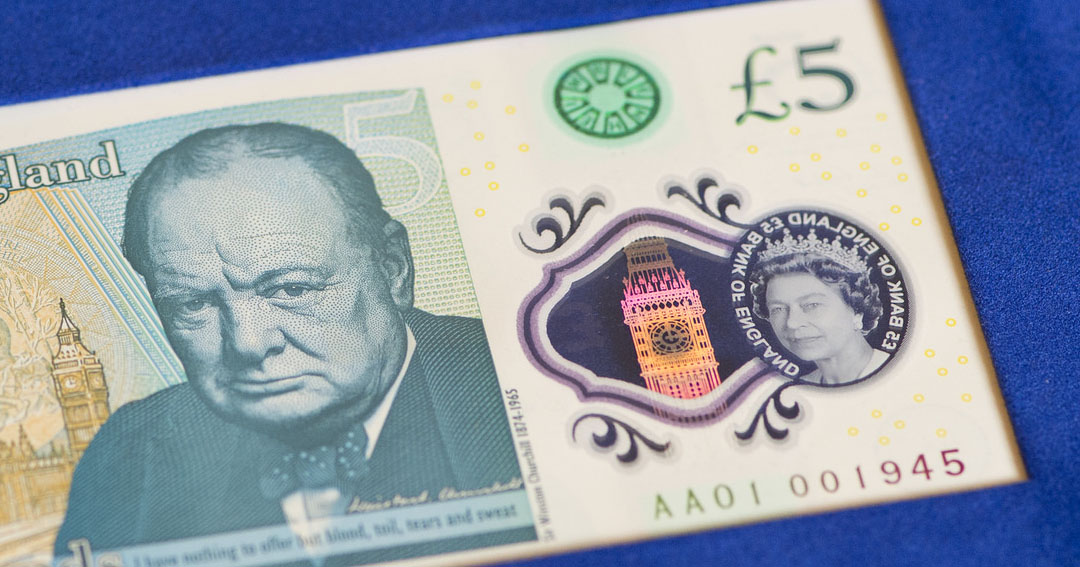The banknotes we produce will always be worth their face value. Even for banknotes that no longer have legal tender status.
If you look closely at any Bank of England banknote, you will notice it contains the ‘promise to pay’ inscription – our promise to honour the stated face value of our banknotes for all time.
The term dates back to the time when our notes represented deposits of gold. At that time, a member of the public could exchange one of our banknotes for gold to the same value. For example, a £5 note could be exchanged for five gold coins, called sovereigns. We stand by the ‘promise to pay’, but exchange into gold is no longer possible: today, our notes can instead be exchanged for other Bank of England notes of the same face value.
What about the serial numbers on banknotes?
Ignored by many, the serial numbers on our banknotes are one of a number of features that can spark huge interest among banknote collectors.
When we release a new banknote, we hold back some of the first printed notes with especially low or symbolic serial numbers. We donate these to people and institutions that were involved in the development of the note or who traditionally receive a note when a new series is issued.
For example, when the polymer £5 note featuring Winston Churchill was first introduced in September 2016, HM Queen Elizabeth II received the fiver with the lowest serial number – AA01 000001. The Churchill War Rooms received a new fiver with the serial number AA01 001945.
Following the introduction of the £10 note featuring Jane Austen in September 2017, we donated the tenner with the serial number AA01 001817 to Winchester Cathedral, marking the year when Austen was buried there.
And following the introduction of the £20 note featuring the artist JMW Turner in February 2020, we donated the £20 note with the serial number AA01 001839 to the National Gallery, where The Fighting Temeraire is exhibited, marking the year that Turner painted this masterpiece.

When we launch new banknotes, we also donate a number of banknotes with lower serial numbers – typically treasured by banknote collectors – to be auctioned to raise money for charity. For example, in April 2020 an auction of newly released £20 notes raised £143,420. This was split between three charities (voted for by our staff): Alzheimer’s Research UK, Pancreatic Cancer UK and YoungMinds.
While it’s true that some of our banknotes are sometimes traded by banknote collectors for more than their face value, this is not something that we have any involvement in. If you are interested in collecting banknotes, you should approach a specialist banknote collector or dealer for advice. To us, a banknote that we have issued will only ever be worth its face value. Of course, prices will change over time, however.
What do serial numbers on banknotes mean?
The set of the first four letters and numbers on a serial number is known as the ‘cypher’ (eg AA01).It represents the banknote’s position on the sheet on which it is printed. The serial number is the six numbers that follow the cypher (eg 123456) and relates to the number of the sheet the note is printed on.
Take, for example, the polymer £5 banknote. As there are 60 banknotes on each sheet of notes printed, the first run was printed on a sheet with cyphers going from AA01 to AA60. There are just under one million serial numbers printed for each cypher – from 000001 to 999000. Therefore, there will be just under 60 million notes beginning with ‘AA’, before the cypher changes to ‘AB’.
Bank of England's explainer on how much is a banknote worth.
